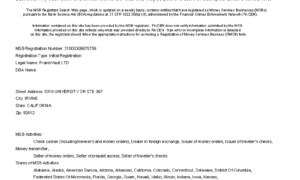In an era where staying connected is an integral part of daily life, choosing a mobile network provider can significantly impact your communication experience. With myriad options available, ranging from global giants to regional players, navigating the mobile network landscape requires a comprehensive understanding of the services, features, and trends shaping the industry. This guide will explore the key aspects of mobile network providers, helping you make an informed decision that aligns with your communication needs.
- The Global Players
Global giants that have established a ubiquitous presence are at the forefront of the mobile network landscape. Companies such as Verizon, AT&T, Vodafone, and China Mobile boast extensive networks, providing broad coverage domestically and often internationally. Their infrastructures support advanced technologies like 5G, offering high-speed data connectivity and low latency for an enhanced user experience.
Pros:
- Extensive Coverage: Global players generally provide wide coverage, ensuring a stable connection in urban and rural areas.
- Cutting-Edge Technology: Leading providers often adopt the latest technologies, including 5G, to deliver faster data speeds and improved network performance.
Cons:
- Cost: Premium services and expansive coverage often come with a higher price tag.
- Customer Service: Personalized customer service may be challenging due to their large customer base.
- Regional Champions
In addition to global players, many regions have their own dominant mobile network providers. For example, T-Mobile in the United States, EE in the United Kingdom, and Airtel in India have established themselves as leaders in their territories. These providers cater to specific local needs and may offer competitive pricing and tailored services.
Pros:
- Localized Expertise: Regional providers understand their customer base’s specific needs and preferences, leading to customized services.
- Competitive Pricing: In some cases, regional providers may offer more competitive pricing than their global counterparts.
Cons:
- Limited International Coverage: Regional providers may have limited international coverage compared to global players.
- Technology Adoption: Some regional providers might lag in adopting the latest technologies.
- Mobile Virtual Network Operators (MVNOs)
Are you wondering What Is an MVNO (Mobile Virtual Network Operator)? Well, Virtual Mobile Network Operators, or MVNOs, operate by leasing network infrastructure from major carriers and selling their services under their brand. Examples include Boost Mobile and Cricket Wireless in the United States. MVNOs often provide cost-effective alternatives, catering to budget-conscious consumers.
Pros:
- Cost-Effective Options: MVNOs typically offer more affordable plans than major carriers.
- Flexibility: MVNOs often provide contract-free plans, offering flexibility for users.
Cons:
- Network Priority: MVNOs may experience slower data speeds during peak times as major carriers prioritize their own customers.
- Limited Coverage: Coverage may be limited, depending on the infrastructure leased from major carriers.
- Cutting-Edge Technologies
The mobile network landscape is continually evolving with advancements in technology. The rollout of 5G networks is a significant development, promising faster data speeds, lower latency, and support for a myriad of connected devices. Understanding the technological landscape can help users anticipate future trends and make informed decisions about their network provider.
Pros:
- High-Speed Connectivity: 5G networks offer significantly faster data speeds, enabling seamless streaming, gaming, and other data-intensive activities.
- Low Latency: The lower latency of 5G networks enhances real-time applications, making experiences like online gaming more responsive.
Cons:
- Limited Coverage: 5G infrastructure is still expanding, and coverage may be limited in certain regions.
- Device Compatibility: Not all devices are 5G-compatible, and users may need to upgrade their smartphones to leverage the technology entirely.
- Data Plans and Pricing Structures
Understanding the intricacies of data plans and pricing structures is crucial when selecting a mobile network provider. Providers offer a range of plans, from unlimited data to pay-as-you-go options. Analyzing your usage patterns and budget constraints can guide you toward a plan that aligns with your needs.
Pros:
- Diverse Options: Providers offer a variety of plans to accommodate different usage patterns and budget constraints.
- Promotional Deals: Many providers offer promotional deals and discounts, especially for new customers.
Cons:
- Hidden Fees: Some plans may have hidden fees, and users should carefully review the terms and conditions.
- Overage Charges: Understanding data limits and potential overage charges is essential to avoid unexpected costs.
- Network Coverage Maps
Before committing to a mobile network provider, consulting coverage maps is essential. These maps illustrate the extent of network coverage in specific areas, helping users determine whether a provider can meet their connectivity needs at home, work, and other frequently visited locations.
Pros:
- Informed Decision-Making: Coverage maps provide valuable information for making informed decisions based on your geographical requirements.
- Identifying Dead Zones: Users can identify potential dead zones or areas with weak signal strength.
Cons:
- Accuracy Challenges: While coverage maps are helpful, network performance may vary due to network congestion and environmental conditions.
- Dynamic Changes: Network coverage can change, and providers may update their infrastructure, affecting the accuracy of coverage maps.
- Data Speed and Performance
The speed and performance of a mobile network can significantly impact the user experience. Conducting speed tests in different locations and at various times can provide insights into the consistency and reliability of a provider’s data speeds.
Pros:
- Consistent Performance: Providers with reliable data speeds ensure a seamless browsing and streaming experience.
- Low Latency: Lower latency contributes to a more responsive network, especially for real-time applications.
Cons:
- Congestion Issues: Network congestion may lead to slower data speeds during peak hours or in densely populated areas.
- Regional Variations: Data speeds may vary based on the region and the provider’s network infrastructure.
Conclusion
In the vast and dynamic landscape of mobile network providers, selecting the right one requires careful consideration of your needs, preferences, and priorities. Whether opting for a global player, a regional champion, or an MVNO, understanding the key factors such as coverage, pricing, technology, and customer service is paramount. Stay informed about emerging trends, technological advancements, and user reviews to ensure that your choice aligns with the evolving landscape of mobile connectivity. By taking a thoughtful and informed approach, you can seamlessly integrate a mobile network provider into your daily life, enjoying the benefits of enhanced communication and connectivity.



































